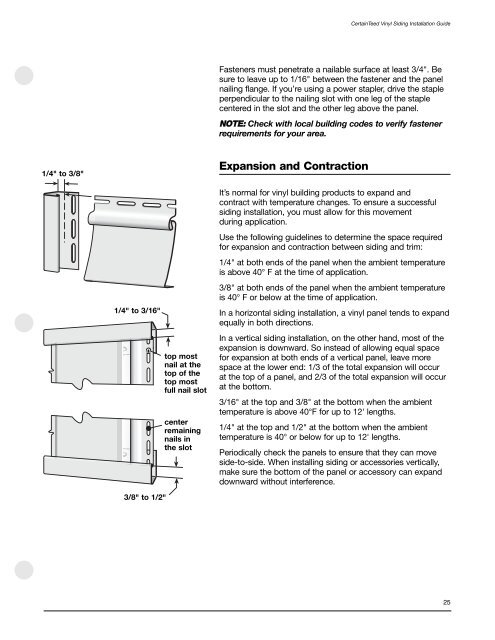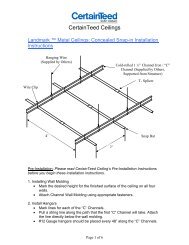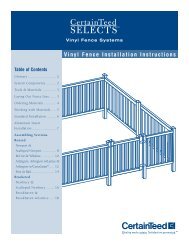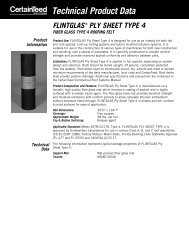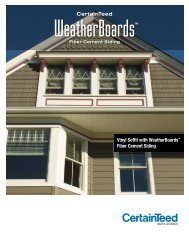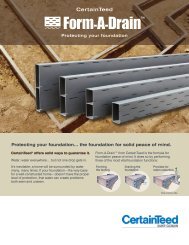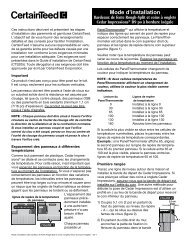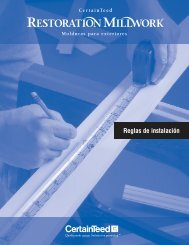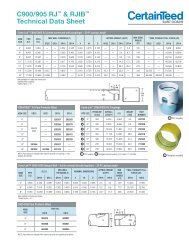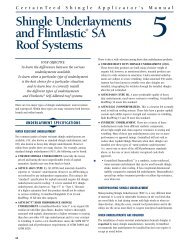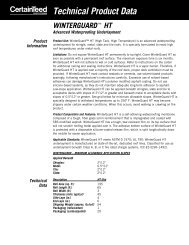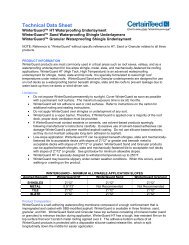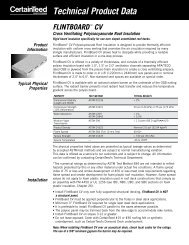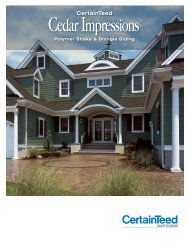Installation Guide - CertainTeed
Installation Guide - CertainTeed
Installation Guide - CertainTeed
You also want an ePaper? Increase the reach of your titles
YUMPU automatically turns print PDFs into web optimized ePapers that Google loves.
1/4" to 3/8"<br />
1/4" to 3/16"<br />
3/8" to 1/2"<br />
top most<br />
nail at the<br />
top of the<br />
top most<br />
full nail slot<br />
center<br />
remaining<br />
nails in<br />
the slot<br />
Fasteners must penetrate a nailable surface at least 3/4". Be<br />
sure to leave up to 1/16" between the fastener and the panel<br />
nailing flange. If you’re using a power stapler, drive the staple<br />
perpendicular to the nailing slot with one leg of the staple<br />
centered in the slot and the other leg above the panel.<br />
NOTE: Check with local building codes to verify fastener<br />
requirements for your area.<br />
Expansion and Contraction<br />
<strong>CertainTeed</strong> Vinyl Siding <strong>Installation</strong> <strong>Guide</strong><br />
It’s normal for vinyl building products to expand and<br />
contract with temperature changes. To ensure a successful<br />
siding installation, you must allow for this movement<br />
during application.<br />
Use the following guidelines to determine the space required<br />
for expansion and contraction between siding and trim:<br />
1/4" at both ends of the panel when the ambient temperature<br />
is above 40° F at the time of application.<br />
3/8" at both ends of the panel when the ambient temperature<br />
is 40° F or below at the time of application.<br />
In a horizontal siding installation, a vinyl panel tends to expand<br />
equally in both directions.<br />
In a vertical siding installation, on the other hand, most of the<br />
expansion is downward. So instead of allowing equal space<br />
for expansion at both ends of a vertical panel, leave more<br />
space at the lower end: 1/3 of the total expansion will occur<br />
at the top of a panel, and 2/3 of the total expansion will occur<br />
at the bottom.<br />
3/16" at the top and 3/8" at the bottom when the ambient<br />
temperature is above 40°F for up to 12' lengths.<br />
1/4" at the top and 1/2" at the bottom when the ambient<br />
temperature is 40° or below for up to 12' lengths.<br />
Periodically check the panels to ensure that they can move<br />
side-to-side. When installing siding or accessories vertically,<br />
make sure the bottom of the panel or accessory can expand<br />
downward without interference.<br />
25


